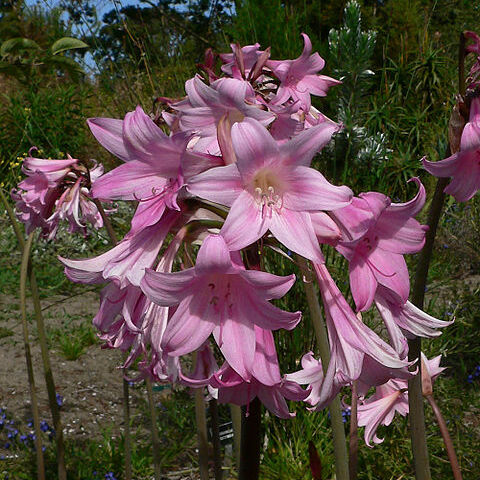Herbs perennial, rarely shrubby or treelike, often with bulbs, corms, rhizomes, or tubers. Leaves basal or cauline, often narrow, margin entire or spiny. Inflorescence a terminal spike, umbel, raceme, panicle, or flowers solitary. Flowers bisexual, actinomorphic or zygomorphic, usually subtended by 1 to several spathaceous involucres. Perianth segments 6, in 2 whorls, free or connate to form a short tube, with or without a corona. Stamens 6, inserted at perianth throat or at base of segments; filaments sometimes basally connate; anther dorsifixed or basifixed, mostly introrse. Ovary inferior, 3-loculed; ovules few to many per locule; placentation axile. Style slender; stigma capitate or 3-lobed. Fruit a capsule, usually loculicidal, sometimes dehiscing irregularly, rarely a berry. Seeds with endosperm.
Stamens 6, opposite the segments, hypogynous or inserted on the tube or towards the base of the segments; filaments free or expanded at the base and connate and forming a "false" corona; anthers 2-locular, introrse, basifixed or versatile, opening by slits lengthwise
Perianth inserted below or usually above the ovary, petaloid, often withering and persisting, with or without a tube; segments or lobes 6, in 2 series, all equal and similar or the inner smaller or larger than the outer; corona often present
Flowers usually showy, bisexual actinomorphic, solitary to many and umbellate at the top of the scape, subtended by an involucre of two or more (rarely only one) usually membranous bracts
Leaves few from the base of the stem or apex of the bulb, more or less linear, with parallel nerves and transverse secondary nerves
Ovary superior or inferior, 3-locular, with usually axile placentas; style slender, with a capitate or 3-lobed stigma
Seeds with fleshy endosperm and small embryo, sometimes winged
Herbs with a tunicated bulbous rootstock or rarely a rhizome
Ovules mostly numerous in each loculus
Fruit a capsule or a berry
Pending.

